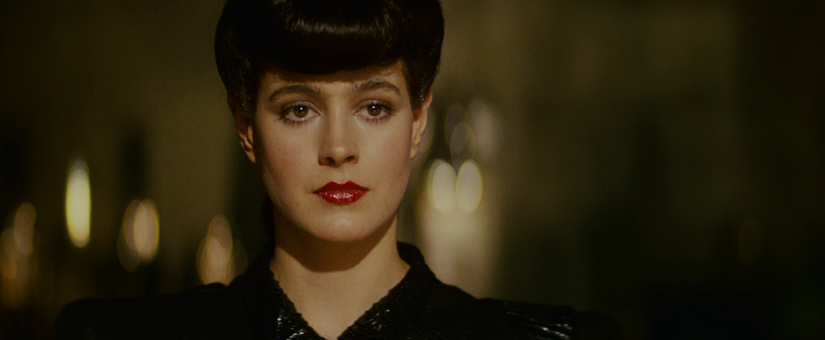
Larissa Lai’s “Rachel” and Cyborg Identity
- Posted by Augur Blog
- On May 17, 2019
- 0 Comments
- blade runner, Larissa Lai, philip k. dick
By Ben Berman Ghan
Larissa Lai’s short story “Rachel” is a brilliant blended retelling of both Philip K. Dick’s Do Androids Dream of Electric Sheep (1968) and Ridley Scott’s film adaptation Blade Runner (1982).
It operates as a sort of mutated replicant text of its source material, becoming what post-humanist Donna Haraway, whom Lai quotes at the top of her collection Automaton Biographies, describes as “cyborg writing” in “A Cyborg Manifesto” cyborg writing is the act of retelling stories in ways that “reverse and displace” the power structures of the original tale. Lai reimagines Rachel not only as Chinese-American, but also as a first generation immigrant to a wealthy American father who picked her mother out of “a catalogue of women,”becoming an echo of how the androids (the novel refers to Androids as “Andys,” but Lai seems to mostly follow the film, in which they refer to Androids as “Replicants”) of Dick’s original novel were bought and sold via catalogue.
Lai reimagines Rachel’s trauma within the conceptual blank slate that the white male human characters and narrators of the original story would impose upon her. The original narrative of Blade Runner never gives Rachel interiority, as the entire story (both the novel and the film) are given from the perspective of the Policeman/bounty hunter Rick Deckard. in Blade Runner Rachel acts only as a mirror, both a giver of exposition and a way for The Policeman to explore his own complicated feelings about Androids. She is given no back story or character traits or desires of her own. She is only a machine.
But for Lai, Rachel’s words and actions no longer exist in a vacuum of the machine that arrived prepackaged and unblemished, but is contextualized by the experience as both the child of an immigrant and a woman of colour—the Rachel of the novel/movie is neither (she is portrayed as white, and no idea of parentage is given)—and by grief, as Lai’s narrative kills off both Rachel’s mother and an unnamed brother in a car accident during her childhood.
Apart from the memory of her death, the accounts Rachel gives of her mother throughout the short story are of failure, like her music lessons where she cannot learn to play properly, or her skating competition where she only falls and hits her head. Rachel’s memories instill in her a need to perform, to seek the approval of her white father, and to fear the consequences of failure.
In one memory, Rachel recounts details of a costume contest where she created an “elaborate Indian princess costume […] and darkened my skin with cocoa powder.” Lai’s Rachel has internalized the toxic racism of the settler-colonial state she’s grown up in, not understanding that through that performance of brownface she was perpetuating it.
Each time, the prize for performance goes elsewhere, either to a presumably white “pale gold girl” or a “boy in a Darth Vader mask.” Rachel never reaches an understanding of the harm her actions cause, only focusing on how best to assimilate in the way her father wishes her to. With each test, Rachel believed she was passing—both passing as Western and passing as human—but at each turn, Rachel’s performance is never good enough.
Rachel’s memories of trying and failing to perform as a child are reflected and replicated in her failure to perform as an adult for The Policeman, where the story catches up to Dick and Scott’s original narrative. Like in Blade Runner, The Policeman (Deckard, the original protagonist) gives Rachel the voight kampff empathy test—a test designed to tell whether someone is a human or a Replicant Android.
Her experience taking The Policeman’s empathy test in Lai’s narrative, with all that new and racialized backstory creates a disturbing parallel. The questions designed to test her humanity reflect the questions authority might ask immigrants. Throughout the interaction Rachel feels the Policeman scrutinize her performance. While explicitly testing whether Rachel is a Replicant, The Policeman’s test is also the final judgment on Rachel’s performance of assimilation. The moment she fails the test, The Policeman no longer addresses Rachel. She becomes an It.
Like in the original novel, The Policeman (Dick and Scott’s original protagonist, Rick Deckard) proves Rachel’s Replicant status by repeating her private memories back to her, stripping Rachel of power over her life’s story. But Lai let’s Rachel grow from the acceptance of her machine identity, allowing her to let go of the performances that had constrained her. Despite their Replicant status, Rachel refuses to relinquish ownership over her memories.
If cyborg writing is “seizing the tools to mark the world that marked them as other” (Haraway), then Rachel’s acceptance of both her identities—as the machine and the human, and which intermingle in the objectification she faces from both sides—allow her to grow into something more than her original writers could have dreamed. Rachel’s claim over her replicant memories transform her into a new kind of deviant. Rachel validates her humanity through her memories while also accepting her machine existence.
For Rachel, the act of remembering becomes in itself a form of cyborg writing, a retelling and reclaiming of her origin story in a way that draws comparisons between the treatment of the android and the treatment of Chinese immigrants and Chinese culture in North America. Rachel does for her own story what Lai does for the story of Blade Runner: decentralizing the West and privileging a new perspective. Just as Lai injection of racialization and memory into the narratives of book and the film mark the text itself as a cyborg, Rachel herself uses that fusion of the old and the new to remake her story.
Though physically a machine, Rachel’s reclaimed memories create a new identity for her, turning Rachel herself into a cyborg: a mixture of the machine and the human.
BEN BERMAN GHAN is an author and editor from Toronto, graduating from The University of Toronto with his HBA with a major in English Literature, and minors in Philosophy, and an incoming student of Ryerson University’s MA in English Literatures of Modernity. His work has appeared in The Goose, The UC Review, Indigo Lit, Occulum Journal, Kaaterskill Basin Literary Journal, South 85, Liquid Imagination, The Sweet Tree Review, The Spectatorial, The Trinity Review, Terse Literary Journal,The Strand, Intersections, The White Wall Review, and Half A Grapefruit Magazine. He has served as the Fiction Editor of The Spectatorial, and Associate Editor for The Goose and The Hart House Review. He is currently the editor of a book of non-fiction for Guernica Editions and Prose editor of Terse Journal. His fix-up novel What We See in the Smoke hits shelves June 2019 courtesy of Crowsnest Books. You can find him @inkstainedwreck or inkstainedwreck.ca
LIKE THIS POST? Augur Magazine is looking for bloggers. Write for us!




0 Comments